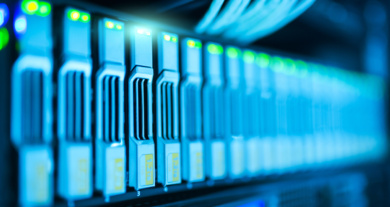Archiving and data backups for businesses are the main topic we have circled around on this blog, especially since more and more regulations outright require it – elevating Business Continuity and Disaster Recovery (BCDR) from a mere good idea to a legal necessity. But backups are not necessary just for businesses – but for any organization at any scale.

Backups versus Disaster Recovery
Backups protect your data, but not your operations. They answer the question, “Can we restore our data?” Generally, provided an untouched copy of the data exists, the answer will be yes except in the worst cases.
Disaster recovery asks an entirely different question: “Can we keep operating when our systems fail?” Backups and data restores are part of this, but not in the most immediate; Disaster Recovery planning includes having a set of contingencies, a plan for each given instance, and an ability to roll with the punches smoothly.
It is specifically the Disaster Recovery part of BCDR that is especially relevant to even non-commercial entities. While a company undergoing forced downtime is losing out on sales, other impacts are more universal – operations shut down, employees on payroll unable to perform their tasks, and so on.
Business disruptions are expensive; they can lead to, among other things:
- Lost staff productivity
- Service disruption
- Compliance penalties
These impacts are universal, touching organizations regardless of their status as governmental or NGO, for-profit or non-profit.
Disaster Recovery for governments
With the cyberattack crippling Birmingham, we’ve seen that cities are not immune to data breaches or their effects. These are a worldwide concern (the Slovak land registry was taken down this year for several months) can also be entirely more prosaic than a cyberattack; the flooding in Florida saw major impact, but we can also see effects from something as simple as a cut cable during construction.
While revenue is not a metric associated with governments, costs can still be a major concern; a report from Comparitech reported that ransomware-induced downtime costs government entities nearly $83,600 per day. This is an impact best avoided.
Disaster Recovery for NGOs
Non-government organizations are in a similar boat in that they are not (usually) revenue-focused, but nonetheless subject to the other impacts of downtime outlined above. Nor are they immune to data loss – we’ve written previously about cyberattacks on schools (one of which, in a high-profile case, had to permanently close after being unable to absorb the impact) and healthcare institutions.
In fact, many of these organizations will find data loss to be a greater concern than businesses; NGOs and especially non-profits tend to operate on a knife’s edge financially, and a major interruption might be unsurvivable.
TECH-ARROW recommends all organizations, regardless of their status, preserve their data. While backups are not the end-all, be-all of BCDR, they nevertheless form a critical part. As such, all organizations should ensure their data is being preserved in a backup adhering to best practices – investing in your future instead of risking later losses.
Your Data In Your Hands – With TECH-ARROW


